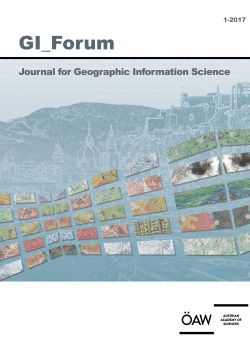
GI_Forum 2017, Volume 5, Issue 1, pp. 228-243, 2017/06/30
Journal for Geographic Information Science

Methods of earth observation deliver quick and reliable information covering large areas, which can be used for the management of natural disasters and humanitarian crises. However, optical sensors reach their limits in areas affected by cloud cover or atmospheric haze, while radar satellites are predominantly unaffected by atmospheric conditions. This paper discusses the application of radar imagery for the assistance of humanitarian operations. The opening section describes the need for complementary information gained from radar data as well as the challenges which arise when working with imaging systems. Subsequently, examples for the use of various sensors are given based on our own findings, and a literature review for various application domains. These include the monitoring of natural resources, the distribution of human settlements or dwellings, and the retrieval of hydrologic parameters. Against this background, limitations and how they were handled in selected studies are discussed. A summary reflects the findings in the light of new developments and discusses challenges for the future.
Keywords: humanitarian relief; remote sensing; radar imagery; settlements; natural resources